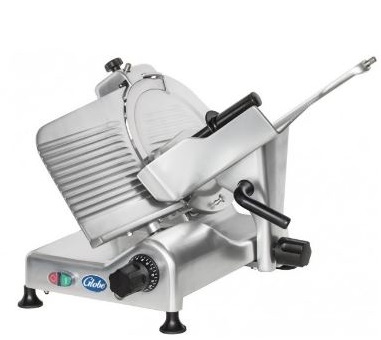Three Deeper Questions to Ask When Choosing Your Next Slicer
Oct 2nd 2017
When it comes to purchasing commercial food equipment, the philosophy of ' lowest price beats all' should not always prevail. The driving factors, more importantly, should be performance and the ability to get your task list done efficiently.

This rings especially true when shopping for a commercial slicer. While price point should be a consideration, purchasing on price alone is a gamble. And, the result of that gamble could be ending up with a slicer that does not get the job done for you and your staff. Or perhaps one that wears out quickly as it is not meant for the heavy duty demands or the product needs of your kitchen.
A little research and reasoning can go a long way. Whether you are replacing a worn out slicer, want a more efficient model or are new to the slicer market, you need to ask yourself; what EXACTLY do I need this slicer to do for me? Consider how much time you spend per day slicing, and whether you slice in bulk.
Only when those questions are answered should then ask; And what’s the best machine for my money to get the job done well?
Analyze your Slicer needs even further.
Here are the three questions we think are most important to answer:
1. Say Cheese! Planning on slicing a lot of cheese? If so, look past most of the light duty commercial slicers.
The amount of time you spend slicing cheese each day should determine a lot when you’re looking for your slicer. You will need ensure that its motor has enough horsepower.
Here at Globe Equipment Company, we have been fulfilling the commercial food industry supply needs since 1938. Call and talk with one of our representatives. They have the knowledge of how slicing equipment’ motors and blades work together to slice cheese, and can help find you the right slicer to get the job done right.
2. Blade Length? One of the most important factors in choosing a new slicer is blade size. How do you know which size is right for you?
How large are the items to be sliced? Whether it is meat, cheese, or vegetables; what is the diameter of the largest item you will be slicing? And then ask yourself – will that change in the near future? Once you get a sense of this measurement, this should tell you how long the blade should be. The blade should typically be 2” larger than what is being cut. Industry-wide, most common is a standard 13” blade. Lighter models usually have a blade around 9-10".
3. Slicing a specialty item? Changing cut thickness and other basic factors are regular features on most slicers. But, if you are slicing highly acidic products on a consistent basis, some blades will not hold up as well as others.
So, basically, specialty items need specialty features. Check with one of our representatives to ensure your machine of choice can handle it. Let us navigate your search.
Slice Down Your Options to Make the Smartest Choice
Need help picking out the right slicer? Contact us or give us a call anytime and we will help you find the best slicer for your needs.
